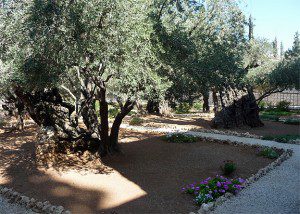In my last post in this series, I suggested that the Temple in Jerusalem was the paradigmatic thin place in the Old Testament. The Temple was considered God’s house, metaphorically speaking, the chief place in which his presence lived on earth. Unlike the Tabernacle, the Temple existed in one place, a place to which thousands of Jews made pilgrimage each year so they might experience God in a deeper way.
It’s important to note, however, that the Temple was not a thin place in the sense of a retreat center or idyllic garden of natural beauty. The Temple courts were places of busy crowds, especially during times of pilgrimage. The sanctuary of the Temple was off limits to non-priests, and the holiest place of all was entered only by the high priest only one day a year.
Jesus and the Temple
When we turn to the New Testament, we find continued respect for the Temple. Jesus’ parents, for example, presented him in the Temple in faithfulness to the law (Luke 2:22-35). They made pilgrimage to the Temple every year at Passover (Luke 2:41). Jesus echoed Isaiah in regarding the Temple as a house of prayer (Luke 19:46; Isa 56:7) and he frequently made pilgrimages there.
However, Jesus also did and said things that seemed to undermine the sanctity of the Temple. His so-called “cleansing of the Temple” was not just a condemnation of its commercialization, but also a stab at the heart of its sacrificial functioning. Moreover, by forgiving sins under his own authority, Jesus’ implied that the Temple and its sacrifices were not necessary any longer. Further, by speaking of himself with Temple imagery, Jesus also suggested that he was in some way replacing the Temple (John 2:19-22).
Moreover, in John 4, when Jesus encountered a woman at a well in Samaria, he critiqued the notion that certain physical places are holier than others. Jews believed that God was most present in the Temple in Jerusalem. Samaritans favored Mt. Gerizim as the true holy place. When the woman mentioned this controversy to Jesus, he responded:
“Woman, believe me, the hour is coming when you will worship the Father neither on this mountain nor in Jerusalem. You worship what you do not know; we worship what we know, for salvation is from the Jews. But the hour is coming, and is now here, when the true worshipers will worship the Father in spirit and truth, for the Father seeks such as these to worship him. God is spirit, and those who worship him must worship in spirit and truth.” (John 4:21-24)
Now, of course Jesus is not weighing in on the notion of thin places per se. But it is interesting that he discounts the value of particular places are more or less optimal for worship. What really matters is not where we are when we want to encounter God, but rather the openness of our spirits (or the presence of the Holy Spirit) and the truthfulness of our understanding of God.
Jesus and Thin Places
In fact, Jesus, as the Incarnate Word of God, was “God’s house,” if you will, in an altogether new sense. In Jesus, God came to earth to reveal himself more immediately and powerfully than in the Temple. Though the metaphor begins to break down at this point, one might say that Jesus was the ultimate thin place. Like the Tabernacle, he was not anchored to any one location, however. Yet as he moved around, God was exceptionally present wherever Jesus was present. Thus, Jesus could say to those who were with him, “The Kingdom of God is already among you” (Luke 17:21).

Given that Jesus was God in human flesh, we might think that places no longer matter at all when it comes to our relationship with God. But, surprisingly enough, Jesus himself seemed to seek intimacy with his Heavenly Father in special places. In Mark 1:35, for example, we read: “In the morning, while it was still very dark, he got up and went out to a deserted place, and there he prayed.” As his popularity increased, Jesus “would withdraw to deserted places and pray” (Luke 5:16). We have no reason to believe that Jesus thought of certain places as essentially thin. But it does seem that he found benefit in getting away from the distractions of ordinary life in order to pray.
The example of Jesus suggests that certain places can help us pray more faithfully, and perhaps even experience God more intimately. These places are “deserted” – free from the bustle of ordinary life. Notice, however, that Jesus appears to have many such thin places. We have no evidence that he frequented one or two particular spots. We do not find in Jesus the idea that certain particular places are necessarily or essentially thin. Rather, any place of quiet and distance from civilization can become a thin place if one goes there to spend an extended time with the Lord.
Moreover, if Jesus was truly the Word of God Incarnate, then he is without question the thinnest of all thin places. In fact, in Jesus, the barrier between heaven and earth wasn’t just thin, it was completely non-existent. Heaven, if you will, broke through the barrier and came to be present on earth. This basic fact of Christian faith radically influences our understanding of thin places, or at least it should. It suggests that if we wish to experience God in a genuine and intimate way, then this will happen in and through Jesus. Though he is not here with us in the flesh, he is with us in spirit, or, better yet, in the Spirit. The good news of Christianity is not that certain places are thin, but that God has come to us in Jesus, and that we can experience God through Jesus and the Spirit.










